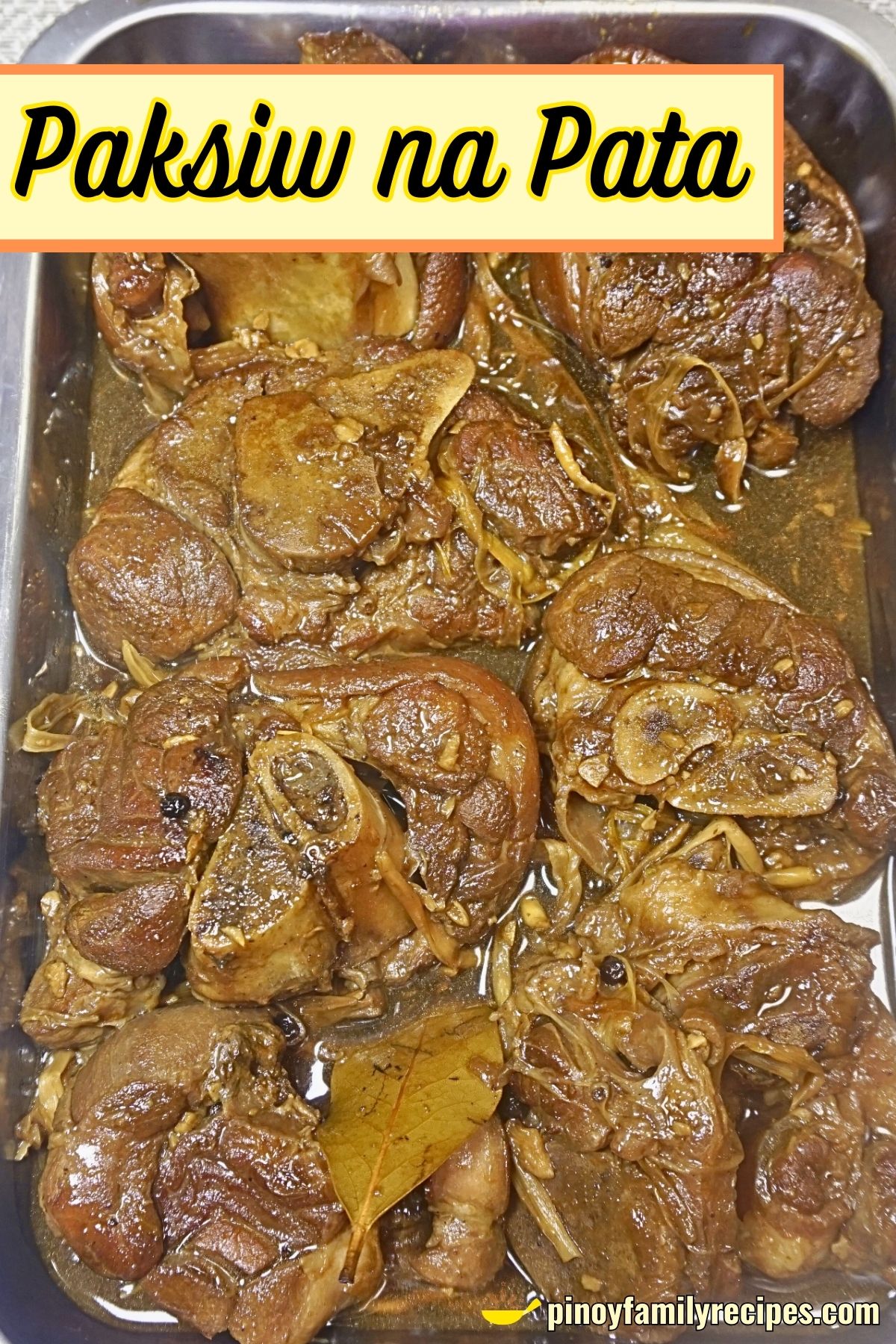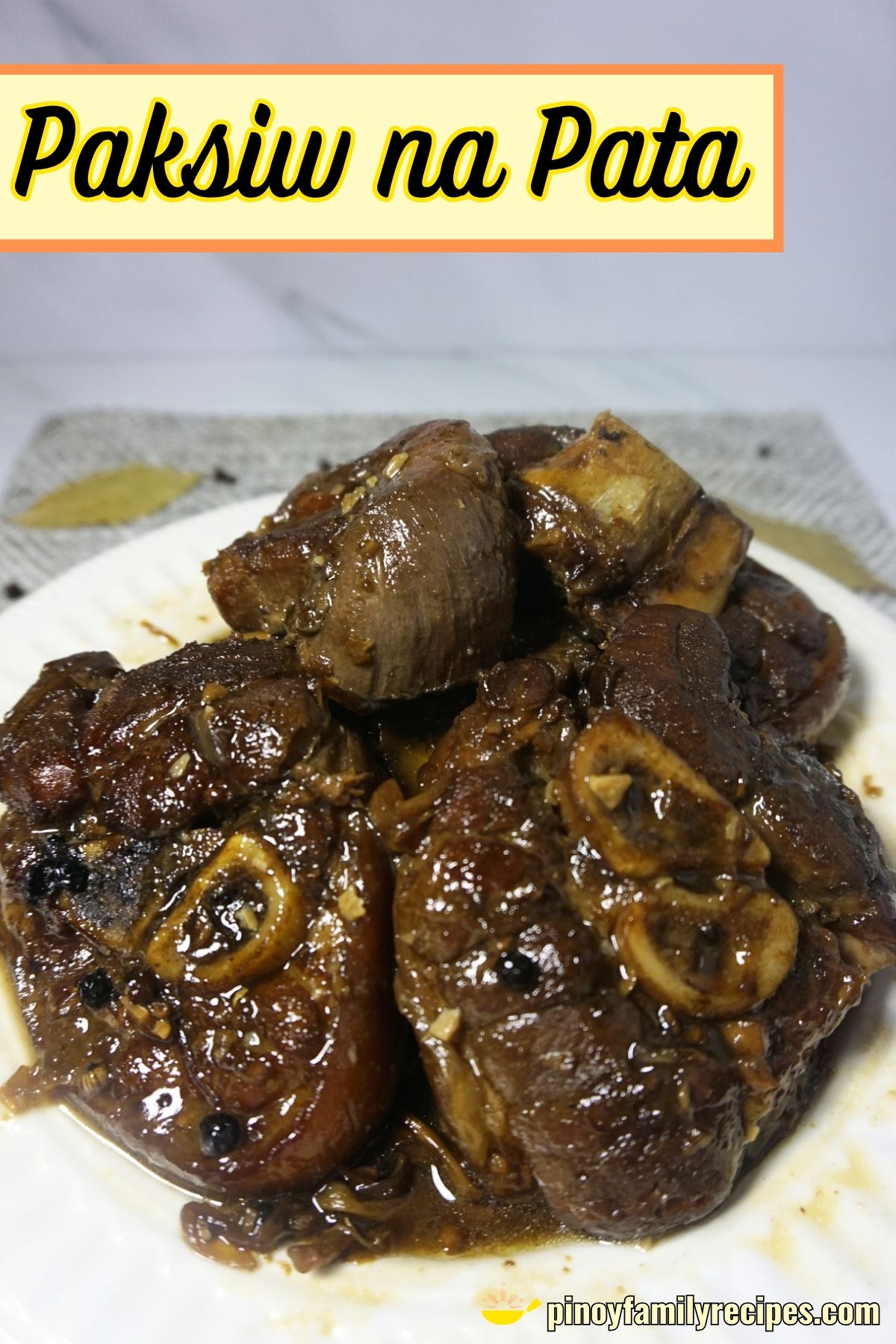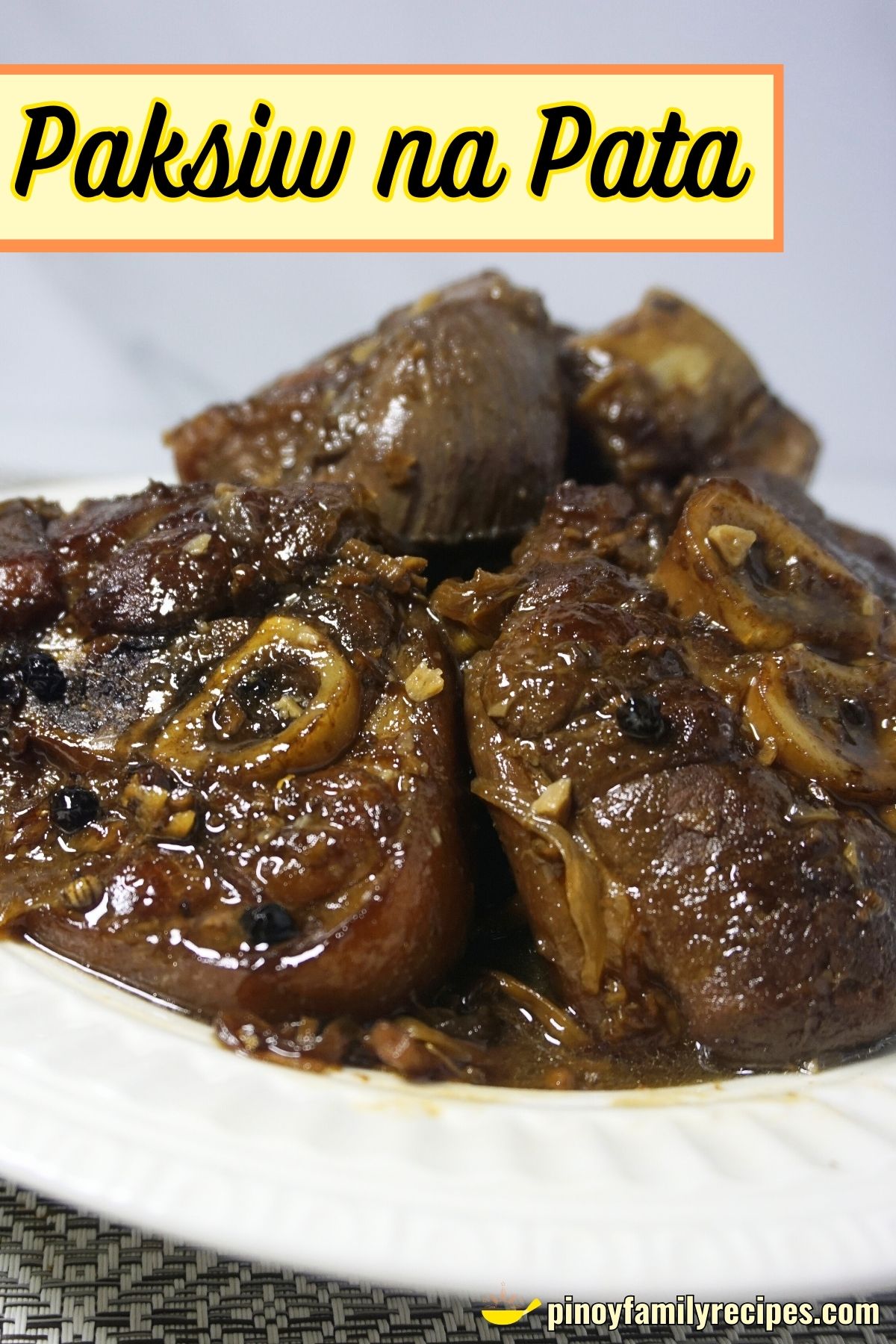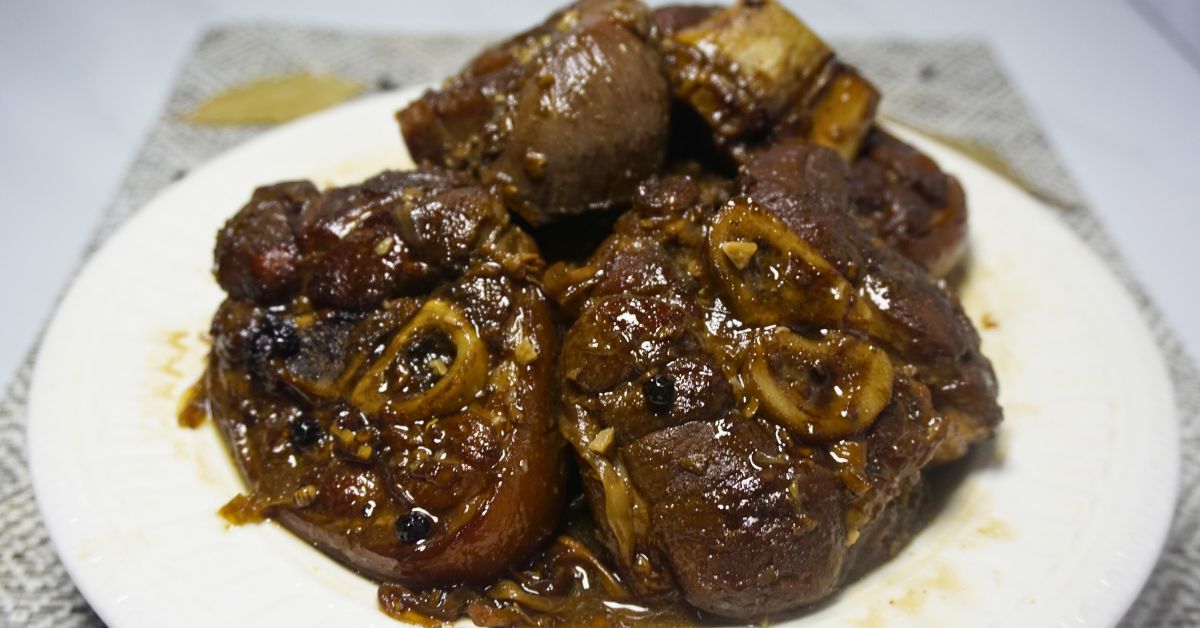
Aside from using pata to cook Dinuguang Baboy, Paksiw na Pata is one of our go-to dishes during the holidays. As a dad who loves to cook, I always get excited when I prepare this dish because it’s simple to make but loaded with flavor. The pork leg becomes tender after simmering in vinegar, soy sauce, garlic, and bay leaves, and the smell fills the house with an irresistible aroma.
What makes Paksiw na Pata special is the perfect mix of tangy and savory flavors. The vinegar gives it a nice, sharp kick, balanced by the soy sauce’s saltiness and just a hint of sweetness from the banana blossoms. The sauce thickens as it cooks, making it perfect for spooning over hot rice. It’s one of those dishes that everyone looks forward to, especially when you want something hearty and comforting. Trust me, once you try that tender pork soaked in rich sauce, you’ll be hooked!
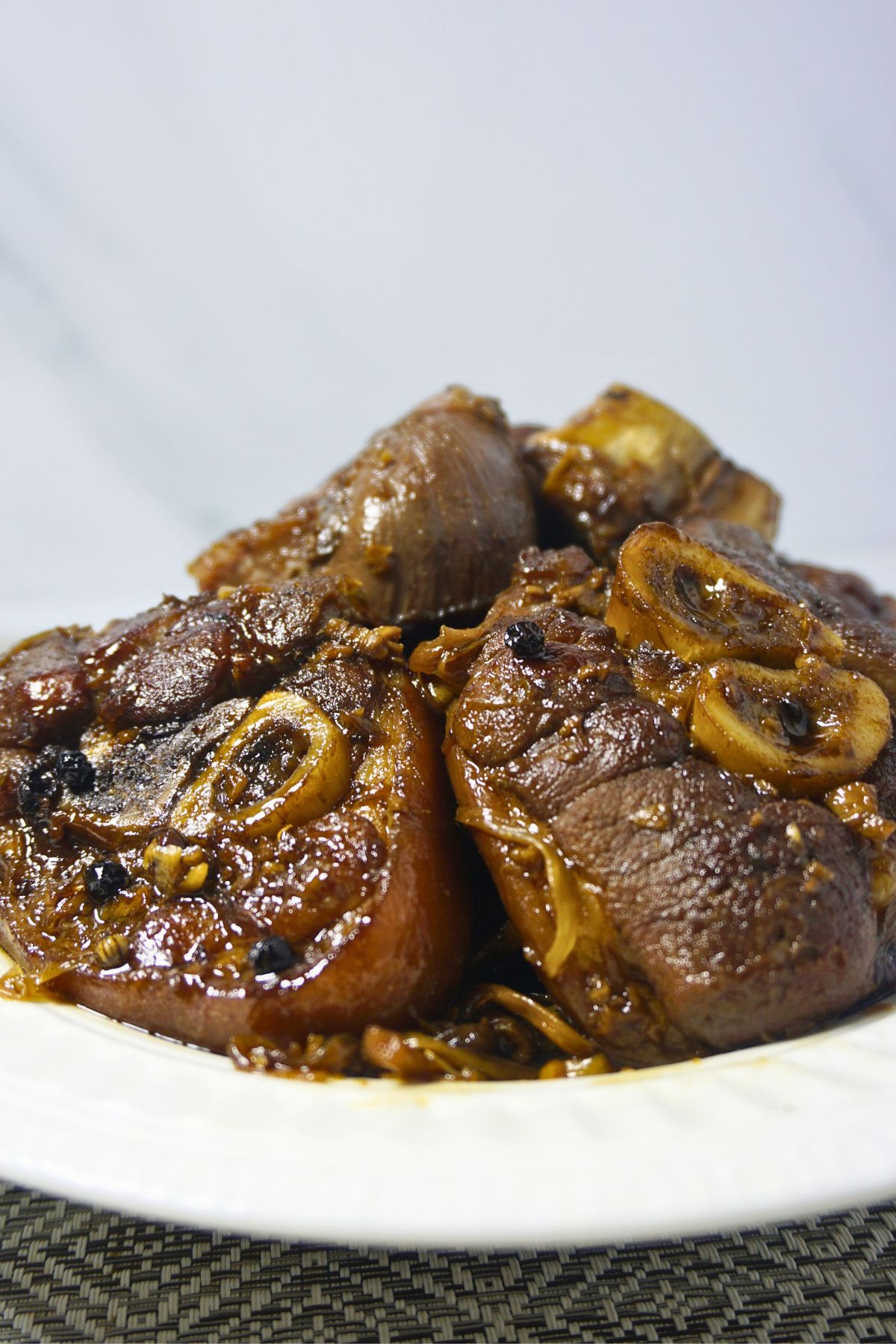
What is Paksiw na Pata?
Paksiw na Pata is somewhat similar to Adobong Baboy, but with its own unique twist. It’s a Filipino dish made by simmering pork leg (pata) in a combination of vinegar, soy sauce, garlic, and bay leaves, just like adobo. However, what sets it apart is the addition of banana blossoms, which add a subtle sweetness and balance the tangy flavors of the vinegar. The pork leg becomes super tender as it cooks slowly, soaking up all the rich flavors of the sauce.
The dish has that savory, slightly sour taste, but with a thicker, more syrupy sauce compared to adobo. It’s usually served with rice, and the thick, flavorful sauce is perfect for spooning over your plate. If you’re a fan of Adobong Baboy, Paksiw na Pata offers a comforting yet slightly different take on those familiar flavors!
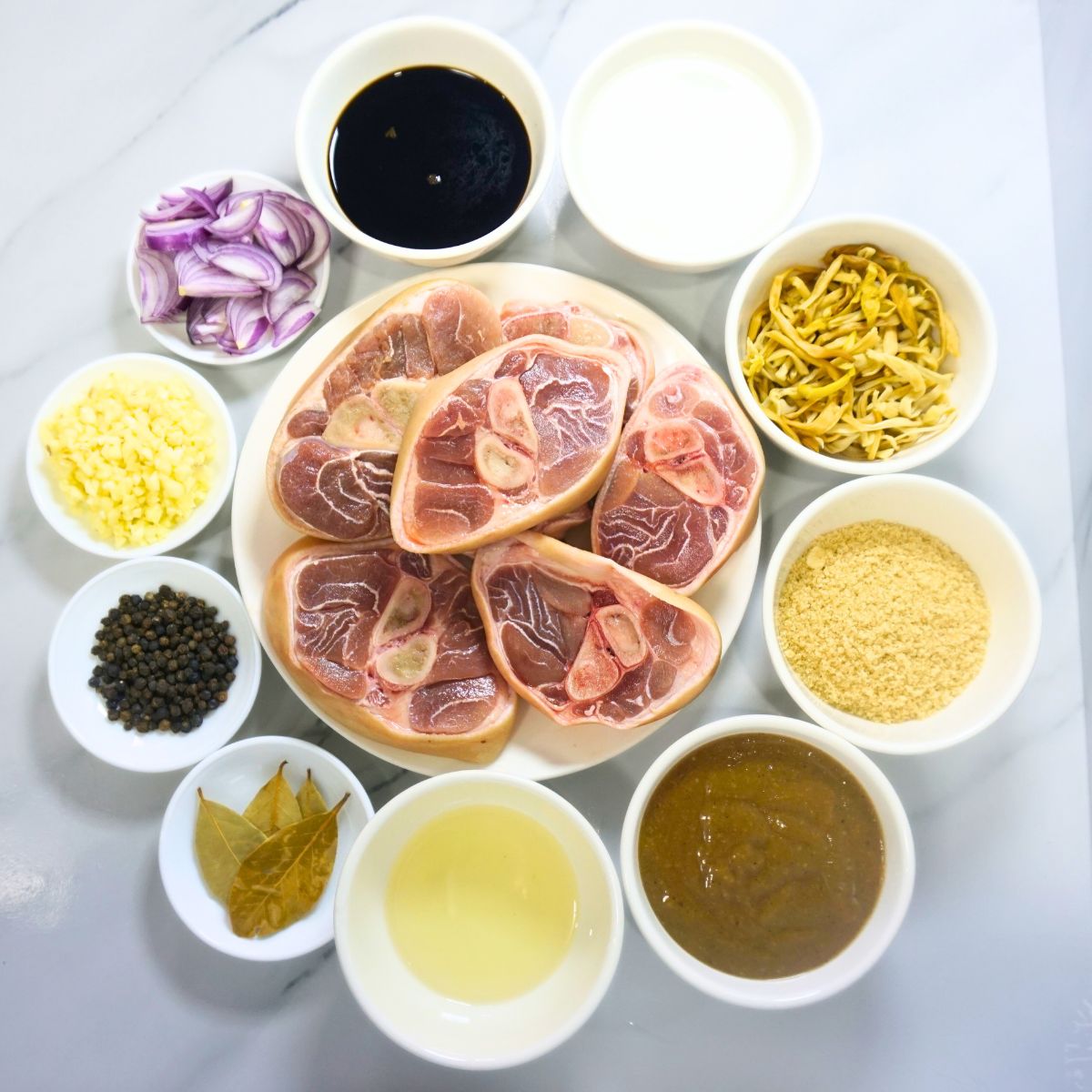
Ingredients for Paksiw na Pata
Pork Leg (Pata)
Pork leg is the star of Paksiw na Pata, known for its rich flavor and tender texture. When cooked slowly, it becomes melt-in-your-mouth tender, soaking up all the savory goodness of the sauce.
Garlic and Onion
Garlic adds a strong, aromatic flavor to the dish, while onion brings sweetness and depth. Together, they create a fragrant base that enhances the overall taste of the Paksiw na Pata.
Soy Sauce and Vinegar
Soy sauce provides a salty, umami kick, while vinegar gives the dish its signature tanginess. This combination creates a perfect balance of flavors that are both savory and slightly sour.
Whole Peppercorns and Bay Leaves
Whole peppercorns add a mild spiciness, while bay leaves infuse the dish with a subtle earthy aroma. Together, they elevate the flavor profile, making each bite more aromatic and satisfying.
Brown Sugar
Brown sugar adds a touch of sweetness that balances the tanginess of the vinegar and the saltiness of the soy sauce. It helps to create a rich, well-rounded sauce that enhances the dish’s overall flavor.
Banana Blossoms
Dried banana blossoms (optional) contribute a unique texture and subtle sweetness. They absorb the flavors of the sauce, adding an interesting layer to the dish that complements the tender pork.
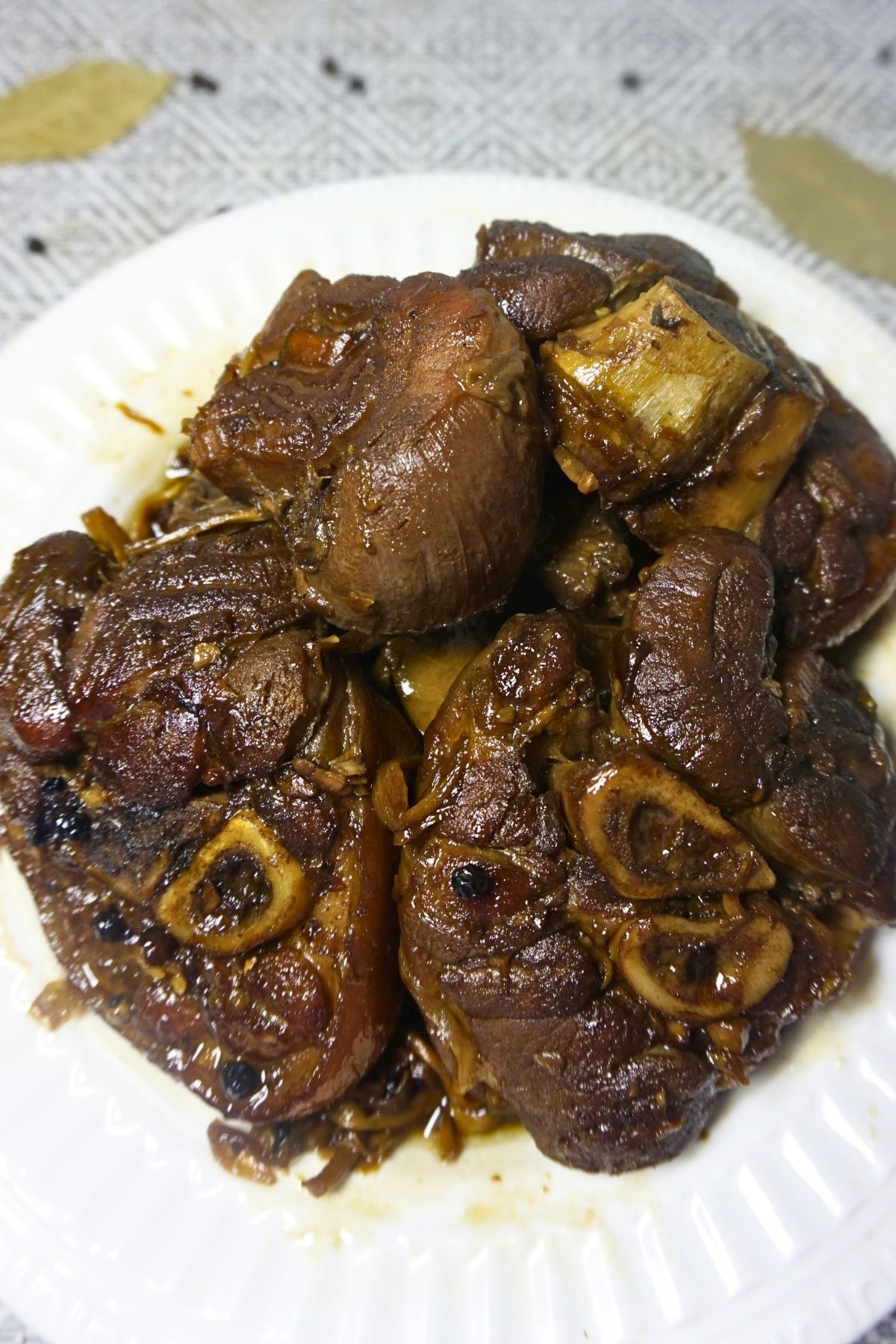
Step-by-Step Guide to Cooking Paksiw na Pata
Cooking Paksiw na Pata is a fun and rewarding experience, and I’m excited to share the steps with you! Just follow along, and soon you’ll have a delicious meal ready to enjoy.
Rinse the Pork Leg Pieces
Start by rinsing the pork leg pieces thoroughly under cold water. This step helps to remove any excess impurities, so your dish will have a clean, fresh flavor. Once rinsed, set them aside to drain.
Sear the Pork Leg
Next, heat some oil in a large pot over medium heat. Pour in about two tablespoons of cooking oil, and then add the pork leg pieces. Sear them until the fat renders and the skin turns golden brown. This step adds a nice color and flavor to the meat, so it’s worth the time. Once they’re browned, take them out of the pot and set them aside.
Sauté the Garlic and Onion
In a separate pot, heat a bit more oil over medium heat. Now, it’s time to sauté the garlic and onion until they become softened and fragrant. The smell will start to fill your kitchen, and it’s a sign that you’re on the right track!
Add the Pork Leg and Sear Again
After the garlic and onion are ready, add the seared pork leg pieces back into the pot. Sear them for about 1-2 minutes to lock in more flavor.
Pour in the Soy Sauce
Now, pour in the soy sauce and let it simmer for a few minutes. This allows the meat to absorb all that delicious flavor.
Add Water, Bay Leaves, and Peppercorns
Next, add three cups of water, along with the bay leaves and whole peppercorns. Bring the mixture to a boil, then reduce the heat to low. This gentle cooking helps make the pork tender.
Add the Vinegar
Once it’s boiling, pour in the vinegar but remember not to stir. Cover the pot and let it simmer for about 1 to 1.5 hours, or until the pork is tender. Don’t forget to stir occasionally to prevent sticking!
Stir in Banana Blossoms and Brown Sugar
When the pork is tender, it’s time to stir in the banana blossoms, if you’re using them, along with the brown sugar. Let everything simmer until the banana blossoms soften and soak up the flavors. Cook for another 10-15 minutes to thicken the sauce and enhance the pork’s flavor.
Serve and Enjoy
Once the pork is tender and the sauce has thickened, remove the pot from heat. Serve it hot with steamed rice, and enjoy the rich, savory flavors of your homemade Paksiw na Pata.
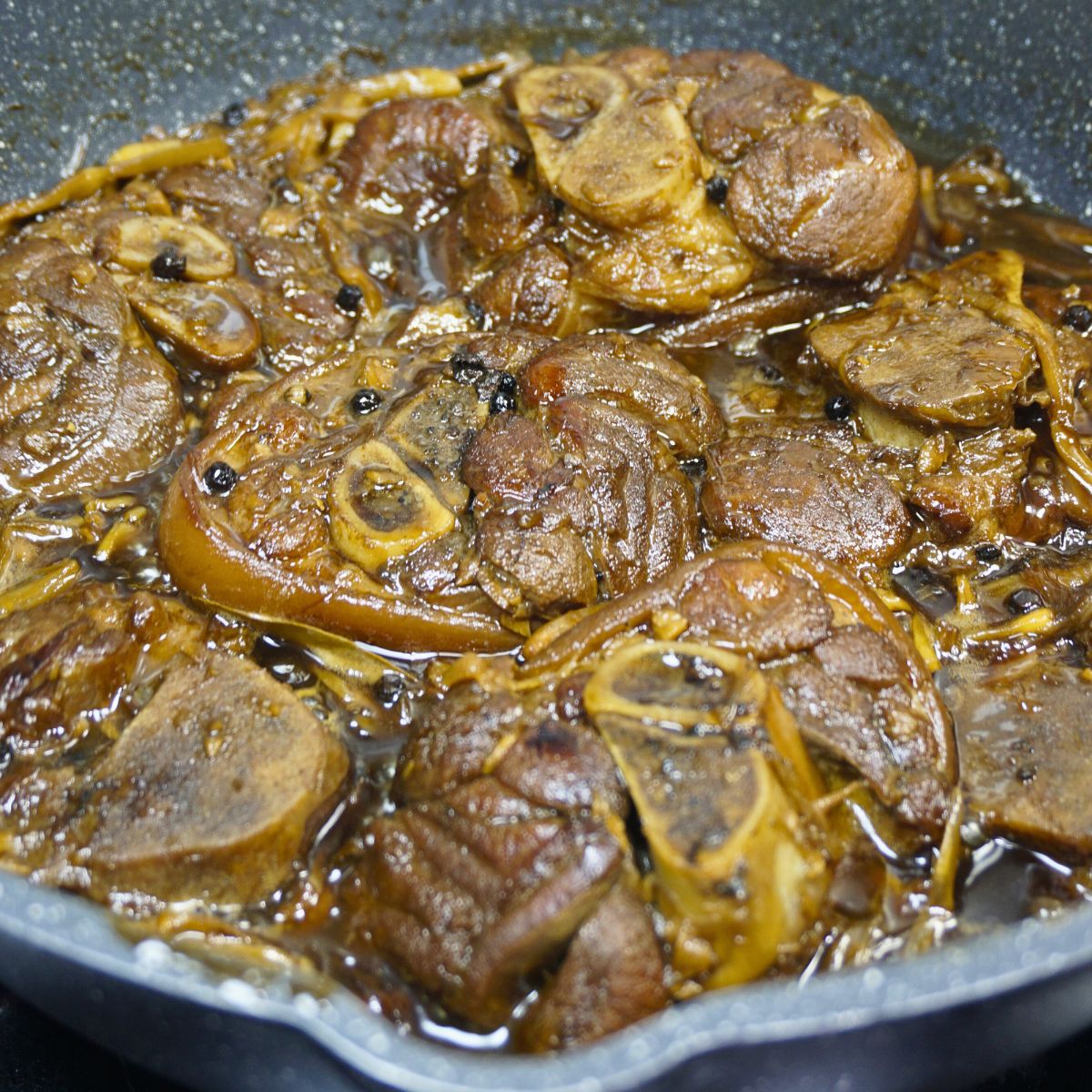
Secret Tips for a Perfect Paksiw na Pata
Choose Quality Pork Leg
Select fresh, high-quality pork leg for the best flavor and tenderness. Look for meat with a good balance of fat and lean portions, as the fat will render down during cooking, keeping the meat juicy.
Don’t Rush the Cooking Process
Paksiw na Pata requires patience. Slow cooking allows the flavors to develop and the meat to become tender. Resist the urge to turn up the heat; low and slow is the key to success!
Use Vinegar Wisely
When adding vinegar, remember not to stir it immediately. This helps to preserve the tangy flavor. Allow it to simmer with the other ingredients, and the acidity will mellow out beautifully.
Adjust the Sweetness
Taste the sauce before serving. If you prefer a sweeter flavor, feel free to add a bit more brown sugar. This sweetness balances the tanginess of the vinegar and the saltiness of the soy sauce.
Add Extra Flavor
For an added depth of flavor, consider incorporating spices like star anise or a splash of calamansi juice before serving. These little touches can elevate your dish to a whole new level.
Let it Rest
If you have time, let the dish rest for a while after cooking. This allows the flavors to meld even more. Reheating the next day can enhance the taste, making it even better!
Pair with the Right Sides
Paksiw na Pata pairs perfectly with plain steamed rice, but you can also serve it with sautéed vegetables or a side of pickled vegetables for a refreshing contrast.
How to Serve Paksiw na Pata
- Serving Temperature: Serve Paksiw na Pata hot for the best flavor. You can reheat it gently if it has cooled down.
- Accompaniments: This dish pairs perfectly with plain steamed rice, allowing the rich sauce to soak into the rice. You can also add a side of sautéed vegetables or pickled vegetables for a refreshing contrast.
- Garnish: Consider garnishing with freshly chopped green onions or crispy fried garlic for an extra layer of flavor and texture.
- Serving Dish: Use a shallow serving dish to display the pork pieces and sauce beautifully. This allows everyone to enjoy the dish visually before digging in!
How to Store Paksiw na Pata
- Cooling Down: Let the Paksiw na Pata cool down to room temperature before storing. This helps prevent condensation, which can make the dish soggy.
- Airtight Container: Transfer the cooled dish into an airtight container. If you have leftover sauce, make sure to include it as it helps keep the meat moist.
- Refrigeration: Store the container in the refrigerator, where it can last for about 3-4 days. The flavors will continue to develop, making it even tastier when reheated!
- Freezing: If you want to store it for a longer period, Paksiw na Pata can be frozen for up to 3 months. Just ensure it’s in a freezer-safe container. Thaw it in the refrigerator overnight before reheating.
Reheating Tips
- Stovetop: Reheat on the stovetop over low heat, stirring occasionally until warmed through. Add a splash of water or broth if the sauce has thickened too much.
- Microwave: If using a microwave, cover the container loosely and heat in short intervals, stirring in between, until hot
Frequently Asked Questions
Yes, you can substitute pork shoulder, but the texture will be slightly different. Pork leg has more collagen and fat, which makes it tender and flavorful when cooked slowly.
Yes, banana blossoms are optional. They add a unique texture and slight sweetness, but the dish will still taste great without them.
Yes, using a pressure cooker can speed up the cooking time. Cook the pork for about 30 minutes on high pressure, then finish simmering the sauce to thicken it.
Yes, but keep in mind that white vinegar is stronger and more acidic. You may want to adjust the amount to suit your taste.

Paksiw na Pata
Ingredients
- 1 kg Pork Leg / Pata (cut into serving pieces)
- 3 tablespoons oil for sautéing
- 8 cloves Garlic (crushed)
- 1 piece Onion (sliced)
- 1/2 cup Soy Sauce
- 3 cups Water
- 1 tbsp Whole Peppercorns
- 4 pcs Bay Leaves
- 1 cup Vinegar
- 6 tbsp Brown Sugar
- 3/4 cup Banana Blossoms (dried, optional)
Instructions
- Rinse the pork leg pieces thoroughly under cold water and set aside.
- Heat oil in a large pot over medium heat. Pour 2 tbsp of cooking oil and sear the pork leg until fat renders and skin turns golden brown. Set aside.
- Heat oil in a separate pot over medium heat. Sauté the garlic and onion until softened and fragrant.
- Add the pork leg pieces and sear for 1-2 minutes.
- Pour in the soy sauce and let it simmer for a few minutes for the meat to absorb the flavor.
- Add 3 cups of water, the bay leaves and whole peppercorns. Bring it to a boil, then reduce the heat to low.
- Add the vinegar, do not stir. Cover the pot and simmer for about 1 - 1.5 hour, or until the pork is tender. Stir occasionally to prevent sticking.
- Stir in the banana blossom (if using) and brown sugar. Let it simmer until they soften and absorb the flavors of the sauce. Let it cook for another 10-15 minutes to thicken the sauce and infuse the pork with extra flavor.
- Once the pork is tender and the sauce has thickened, remove from heat and serve with steamed rice.
Notes
